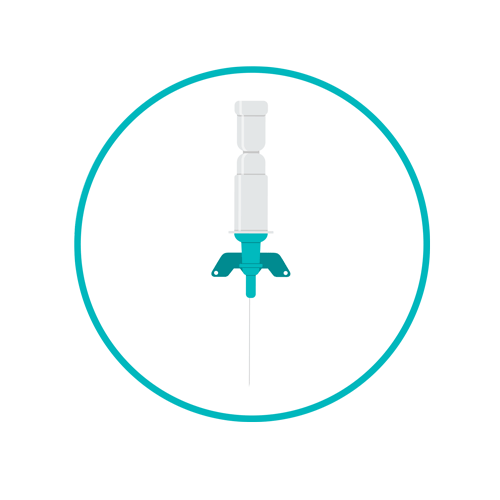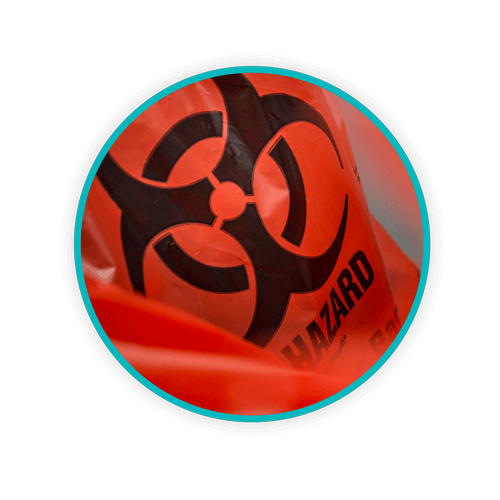Guide to Connecticut Medical Waste Regulations

Ever since its conception in 1919, Connecticut’s Hospital Association has ensured that residents and visitors to their state receive the best in medical and healthcare services. While the state has just over two dozen acute-care hospitals, it has countless ancillary health-related organizations. Every year, Connecticut hospitals take care of roughly 400,000 patients within its eight counties. That’s a lot of healthcare and its associated medical waste.
Do you know the rules as they pertain to medical waste in your city, county, and state? Whether you’re a hospital or an outpatient center, a dentist, or a veterinary facility, compliance to Connecticut’s waste regulations is essential.
It should also be noted that like other states, Connecticut guidelines are compliant with federal rules and regulations. However, many states throughout the country specify their own rules and regulations when it comes to medical waste disposal, some of which are more complicated and stringent than those of the federal government.
Turn to your state’s governmental agencies for detailed information on how to handle medical waste regulations and disposal, which emphasizes biomedical and infectious waste compliance.
TOPICS WE WILL COVER:
Connecticut’s Department of Energy and Environmental Protection
In Connecticut, the Department of Energy and Environmental Protection (DEEP) is the primary resource for biomedical waste management. In this state, biomedical waste is equated with infectious waste.
For easy reference, Daniels Health encourages all hospital or medical waste generators to refer to Connecticut state agencies for regulations. For example:
- Sections 22a-209b,c of Connecticut’s General Statutes (CGS)
- Department of Energy and Environmental Protection (DEEP)
Clarification of definitions regarding medical waste streams is important. The state of Connecticut places a special importance on handling, storage, transportation and disposal of infectious waste. In the state of Connecticut, biohazard waste not only means infectious, but pathological and/or chemotherapy waste. These waste streams are typically generated during medical care processes or medical research that involve humans or animals.
Per the state, some examples of biomedical waste include blood and bodily fluids, sharps, and or discarded animal carcasses that are known to have been exposed to an infectious agent.
However, biomedical waste is regulated as a hazardous waste only if it contains characteristics of a hazardous waste according to hazardous waste management regulations of Connecticut. An infectious waste implies any virus, bacteria, or organism that is “capable of communication by invasion and multiplication in body tissue and capable of causing disease or adverse health impacts in humans.”
Pathological waste typically implies any human tissue, body part, or organ (except teeth and “contiguous structures of bone and gum) that are removed during a medical or surgical procedure or an autopsy. It doesn’t imply a human corpse.
Know the definitions of small waste generators and large waste generators in the state. A small quantity generator is defined as one that ‘generates less than 50 pounds of biomedical waste in a calendar month, or who delivers for transport, in any single shipment, less than 50 pounds of biomedical waste’.
Sharps disposal in Connecticut
When it comes to sharps disposal, the state’s definition of sharps defines and includes not only discarded needles and lancets that have been used in some type of patient care, research, or industrial setting, but include syringes (with or without needle), hypodermic needles, dental carpels and scalpel blades. Other qualifying items can be found in CGS §22a-209b(13). In Connecticut, it should also be noted that the term ‘hypodermic needle and syringe’, is also meant to imply any type of intravascular device that includes indwelling catheters and introducers.
Compliant biomedical waste management
In order to remain compliant when it comes to biomedical waste management in the state of Connecticut, refer to numerous resources in the portal of the state governments Department of Energy Environmental Protection. The portal provides important as well as downloadable documents that include:
- Biomedical waste tracking form
- Biomedical waste regulations (Refer to the Regulations of Connecticut State agencies, sections 22a-209-15. Biomedical waste.)
- Connecticut biomedical waste requirements and common industry practices
- A list of licensed biomedical waste transporters
We realize this is quite a bit of reading, but as they say, the devil is in the details. Medical waste generators are responsible for their facility waste, from the moment of its generation to its ultimate disposal. This also includes what happens to it after it leaves your facility site. This is called the cradle-to-grave approach, and is essential in maintaining compliance and avoiding fines and penalties for unlawful disposal of medical waste.
A number of additional state and federal agencies are involved in proper and compliant medical waste disposal. These include:
- United States Environmental Protection Agency
- Resource Conservation and Recovery Act - Provides for federal and state agencies to control hazardous waste using the “cradle-to-grave” approach. These laws create a framework for compliant management of solid waste (hazardous and non-hazardous)
- Connecticut Department of Transportation
- US Department of Transportation
- Northeast Recycling Council
- Northeast Waste Management Officials Organization
Take the time to browse the laws and regulations of the state of Connecticut including their general statutes, public acts that affect the environment, as well as proposed, pending, and final regulations that can be found by subject or citation on the government website, here. The website also provides a link to federal rules, regulations, and laws.
While Connecticut’s regulatory agencies focus primarily on biomedical and infectious medical waste scenarios and disposal processes, all medical waste streams must follow guidelines of federal or state agency guidelines. Err on the side of caution and review Title 40, Code of Federal Regulations, as well as the websites and procedures of Connecticut’s:
- Department of Environmental Protection
- Department of Health
Packaging and labeling
Connecticut state law requires medical waste generators, prior to transporting any biomedical waste off-site, to follow a number of guidelines. They include but are not limited to:
- Packaging the waste in rigid, leak-proof, and moisture-resistant biohazard waste containers that are also strong enough to resist bursting, caring, or leakage under “normal circumstances”
- Waste is to be placed in red bags to render it recognizable, using the universal symbol of biomedical waste and mark with the words ‘Biohazard” in large and legible lettering
State requirements specify that biomedical waste always be stored in a location and manner that “maintains the integrity of its packaging and provides protection from water, precipitation and wind.”
Approved disposal methods in Connecticut
Connecticut's regulations require that biomedical waste be appropriately packaged and labeled per state regulations. Medical waste generators and permitted biomedical waste transport companies are required to deliver such waste to a treatment facility that has been permitted by the state to store, treat and otherwise dispose of biomedical waste. Approved methods of treatment and/or disposal include:
- Incineration for pathological waste
- Incineration for chemo waste
- Incineration, steam sterilization, or other alternative treatment technology, or discharge to sanitary sewers for infectious waste
All biomedical waste, regardless of disposal method, must be rendered unrecognizable before it can be disposed of as municipal solid waste.
Don’t take chances with your medical waste
Daniels Health provides numerous products, services, and resources to ensure compliance with state and federal guidelines. Don’t take chances with your medical waste that can lead to fines and penalties or expose your healthcare facility to dangerous contaminants or hazards. If you have questions about medical waste disposal procedures in Connecticut, visit our Connecticut Waste Services page or call us today.
ASK US FOR A WASTE CONSULTATION
